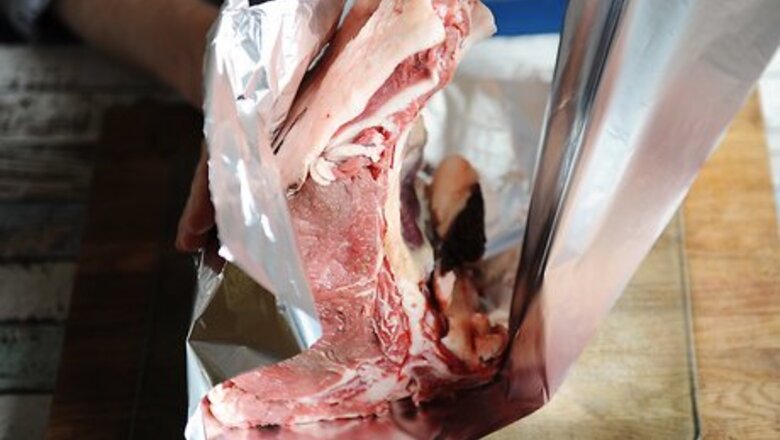
views
Cutting Cooked Ribeye Steaks

Wrap the steak in foil and let it sit for about 10 minutes. Once your steak is cooked to your liking, remove it from its heat source and wrap it in aluminum foil. Let your steak sit for about 10 minutes so that it can reabsorb its juices. Then, remove the aluminum foil.
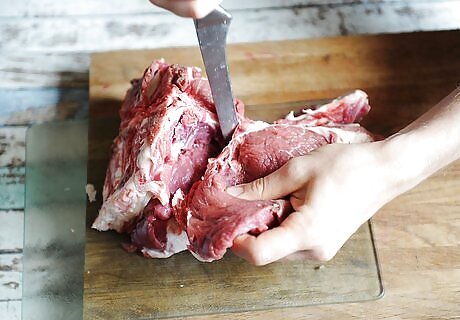
Cut the steak off of the bone if necessary. Transport the steak to a cutting board and use a steak knife to cut off the bone if you have a bone-in ribeye steak. This bone should be located on the outside edge of the steak. The meat around the bone is typically eaten without utensils, while the rest of the steak you can cut into pieces and eat.
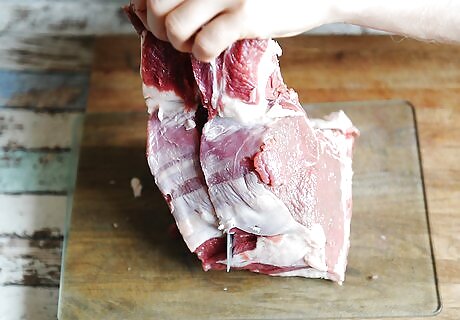
Slice against the grain. The “grain” refers to the long muscle fibers within the steak that are parallel to each other. If you cut your steak in the direction of these muscle fibers, the steak might be too tough. Cut your pieces against the grain so that the steak is as tender as possible. You can slice your steak as thin or thick as you prefer, but if you aren’t sure where to start, try cutting it into ⁄2 inch (1.3 cm) slices.
Cutting Uncooked Boneless Ribeye

Buy a whole boneless ribeye. If you want to cook several ribeye steaks, then it’s most cost effective to buy the entire ribeye, which is typically about 12-18 pounds (5.4-8.2 kg) of meat. You can purchase a whole ribeye at a butcher’s shop or a grocery store for as low as $5 per pound, while pre-cut slices can sometimes be as expensive as $11 per pound.

Cut off the fat on the back of the ribeye with a boning knife. One major area where you’ll want to remove fat is on the back surface of the ribeye. With the back facing up, move a boning knife horizontally across the surface to cut off the fat.
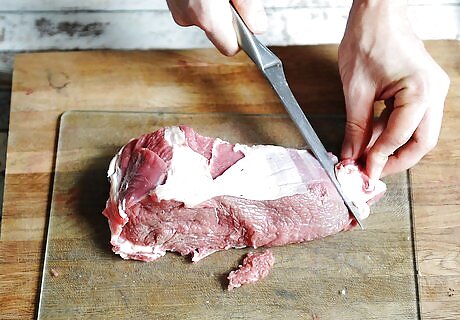
Use your boning knife to cut off the tail. The other major area that typically contains a lot of fat is the tail, which is located along the more narrow side of ribeye. Position the boning knife about 1 inch (2.5 cm) in from the narrower side of the ribeye and to slice off the tail.
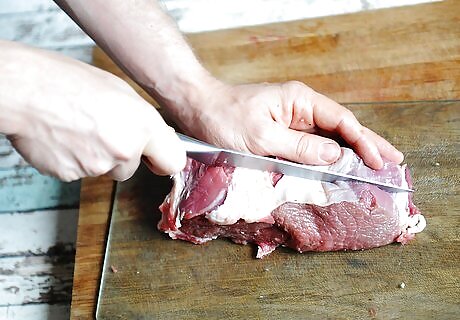
Cut 1 inch (2.5 cm) steaks. You can cut the ribeye steaks as thin or as thick as you want, but 1 inch (2.5 cm) is a common width. Simply measure 1 inch (2.5 cm) from the end of the ribeye and saw all the way through it in a straight line with your knife. You can also determine thickness by the number of people you’re hoping to feed with the ribeye. For example, slicing your ribeye into 1 inch (2.5 cm) steaks may get you 12-16 individual steaks. If you’re only feeding 10 people, then you might consider making the steaks a little thicker, perhaps 1.5 inches (3.8 cm).
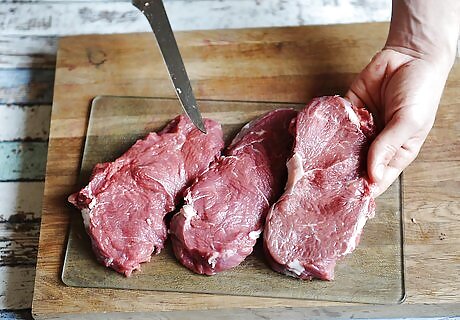
Trim off any remaining tail fat. Once you’ve gotten your ribeye cut into single steaks, go back and slice off any big chunks of fat that you notice on the narrow end of each one. Even if you cut off the tail before you sliced the steaks, excess fat may remain on this part of your steaks.
Cutting Uncooked Bone-In Ribeye
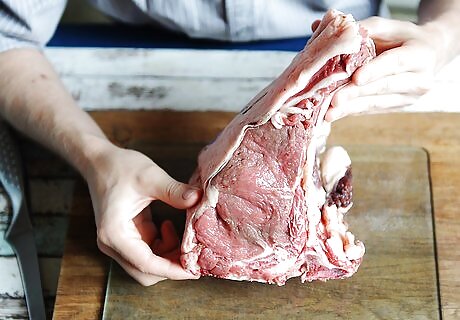
Purchase a whole ribeye from the market. Go to a butcher’s shop or a grocery store and buy a whole ribeye. Although you’ll need to cut the ribeye into steaks yourself, it’s much more affordable to purchase it this way. While pre-sliced ribeye steaks are often about $10-11 per pound, entire ribeyes cost $8 or less per pound.
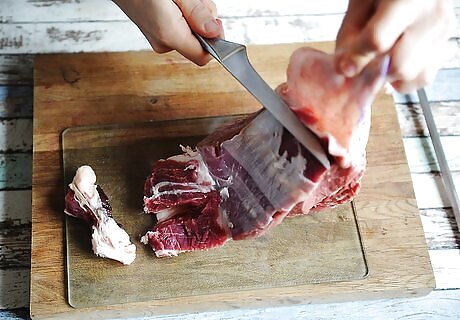
Cut off the big pieces of fat on the back of the ribeye. Turn the whole ribeye onto it’s front so that the fat-covered back is exposed. Use a sharp butcher’s knife to slice across the surface of the fat and pull it off with your other hand.
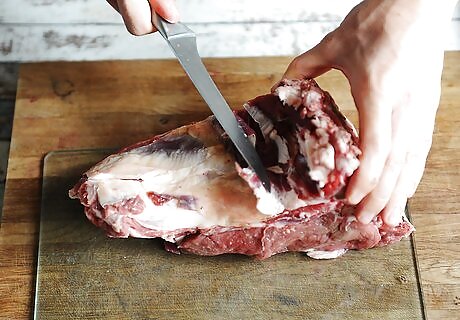
Turn the ribeye over and slice between the bones. Lay the ribeye on its back so that you can see the ends of the rib bones that are inside of the meat. Position your knife directly between the 1st and 2nd set of rib bones and slice all the way through the meat. This will give you a large, bone-in cowboy style ribeye steak. Continue cutting between the bones in order to get more bone-in ribeye steaks.
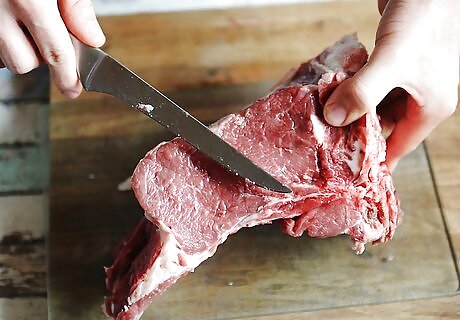
Trim off any fat that from the tail. Once you’ve cut your ribeye into individual steaks, chop off the fatty end of the tail. This is especially important if you’re grilling them, as the fat can catch on fire.

















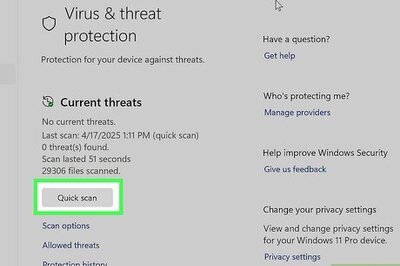


Comments
0 comment